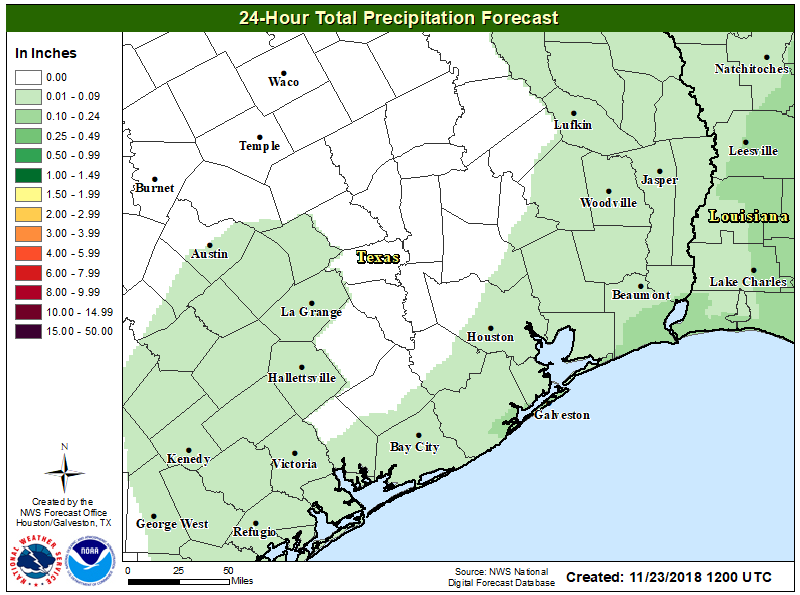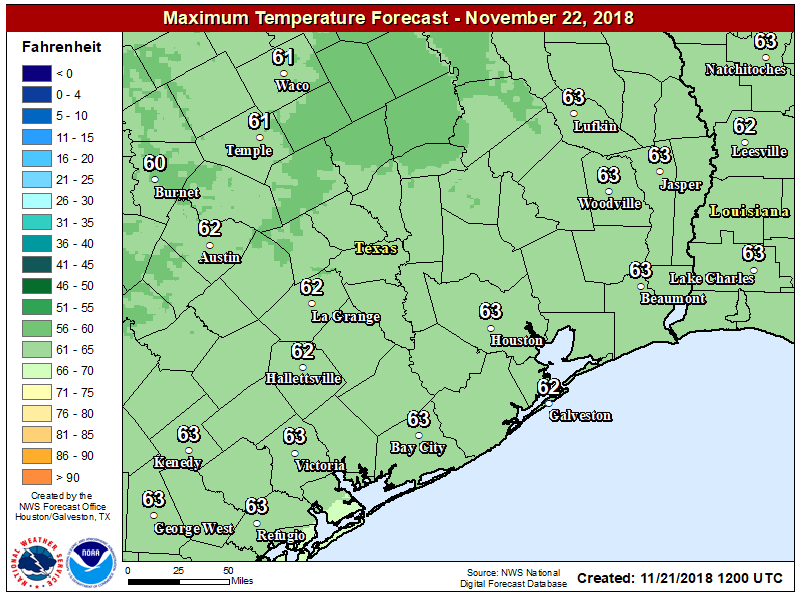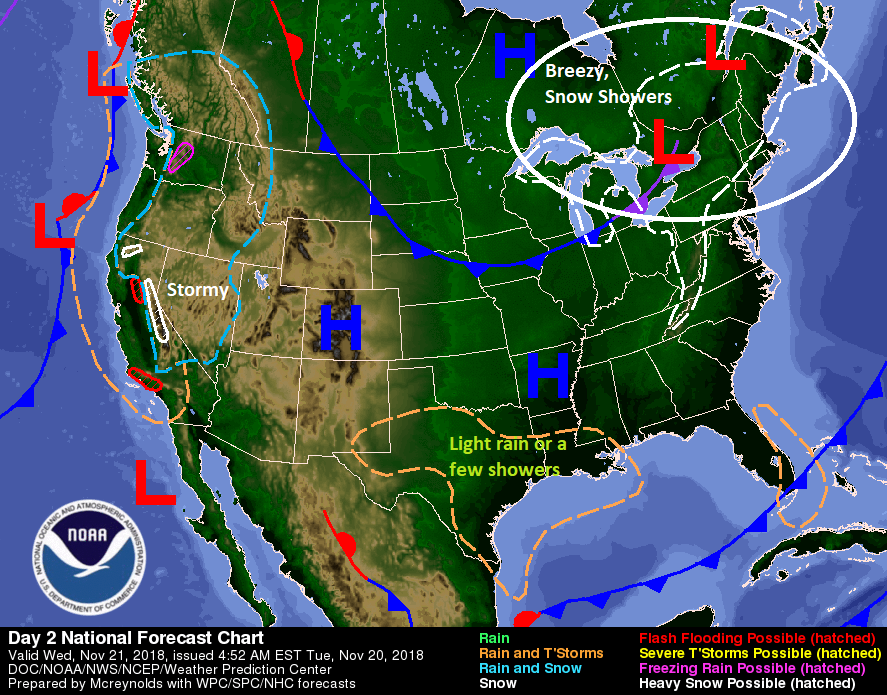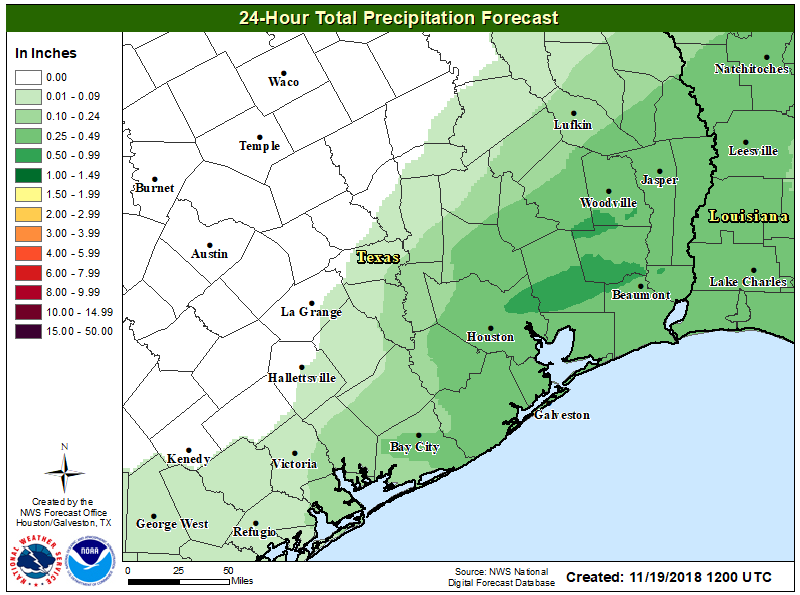Good morning! Whether you’ve been up all night shopping, up all night waiting on shoppers, or you sensibly just slept off a tryptophan high, welcome to the day after Thanksgiving. We’re now in the midst of the holidays, and our weather will get off to a good start. We’ll have a seasonably warm weekend, and then winter-like weather during the week ahead. We should remain sunny for most of that period.
Friday
A low-pressure system along the coast and an onshore flow will combine to bring some lower-end rain chances into the region today—probably no more than 20 to 30 percent. These showers will move east by around noon or shortly thereafter, and accumulations shouldn’t be much to write home about. Mostly cloudy skies will limit highs to around 70 degrees. A weak front will arrive later this evening, or tonight, but the atmospheric profile does not favor any additional rain with this front, and it just should bring a wind shift (from the north) into Saturday morning.

Saturday
This still looks like a great day for anything you have planned outdoors. Friday night’s front will eventually wash out, but it should bring enough dry air to make for a pleasant, not too humid day in the mid-70s, with mostly sunny skies.



